How Horses Learn: The Science of Timing & Trust

The Science of Timing: How Horses Learn What You’re Really Teaching
“A horse doesn’t learn from just what you do — they learn from when & how you do it.”
Every horse owner has felt that fleeting moment, the instant your horse softens, shifts, or offers something new. Blink, and it’s gone. Reward too late, and the lesson changes. Timing is the invisible language of training, and mastering it transforms confusion into trust.
Before You Begin: Timing only works when it’s built on understanding.
This article approaches timing with the awareness that listening and observation come first — learning to read the quiet, honest signals your horse offers through their eyes, muscles, breath, and balance.
These subtle cues tell you when your horse is curious, when they’re thinking, and when they’re unsure. Recognizing those moments helps you time your rewards toward calm thought rather than tension — so you’re reinforcing trust, not fear or defensiveness.
The goal is always to reward calm thought and a genuine try — not compliance born from stress. Recognizing the difference is the heart of compassionate training.
Why Timing Matters More Than Technique
Technique often takes the spotlight — new bits, patterns, or cues promising clearer communication. But the truth is simpler: no matter how polished your aids are, your horse only understands the moment you release or reward.
In learning theory, this is called temporal contiguity — the principle that a behavior becomes linked to whatever consequence follows it within a few seconds. Wait too long to release pressure or deliver a reward, and your horse may associate the feedback with a completely different action.
It’s not the cue that teaches them — it’s the timing of relief or reward that tells them what worked.
The Neuroscience of Reward and Release
When your horse performs a behavior and experiences immediate relief or pleasure, their brain releases dopamine — the neurotransmitter responsible for motivation, focus, and learning. That burst of dopamine strengthens the neural pathways that say, “Yes, do this again.”
But dopamine’s attention span is brief. Studies across species show that the brain connects cause and effect most effectively when the reward or release happens within a few seconds — ideally under three. Beyond that, the association weakens and the horse begins forming new links based on whatever happens next.
This isn’t a rigid number; it’s a biological rhythm. For some horses, the connection window might last a little longer; for others, it’s almost instantaneous. The key is to aim for immediacy and consistency.
Key takeaway: Learning is strongest when relief or reward follows the desired behavior within a few seconds. The shorter and clearer the gap, the stronger the understanding.
How Poor Timing Builds Tension (and What to Do Instead)
Every horse learns — even from our mistakes. When timing drifts, unintended lessons take root:
- Releasing after a horse braces rewards the brace.
- Petting during tension reinforces the tension, not the calm.
- Delayed treats confuse which behavior was “right.”
The result? A horse who tries harder but understands less — and a human who feels unheard. When we slow down and observe, we can see how much they’re trying to read us. Good timing gives them the clarity they crave.
Rebuilding Trust Through Clarity and Calm
It’s never too late to reset. Horses are astonishingly forgiving when communication improves. To rebuild clarity:
- Start small. Reward single calm breaths, shifts of focus, or soft steps.
- Be consistent. The same cue, same response, same timing builds security.
- Bridge the gap. Use a marker — a soft “yes,” click, or light wither scratch — the moment your horse gets it right. This bridges the time between action and reward, keeping the learning link alive.
- End on understanding. Quit the session on clarity, not exhaustion.
Each correct moment you catch builds trust; every mistimed cue teaches something else. The gift of timing is presence — being with your horse, second by second.
Practical Timing Tips for Everyday Training
- Aim for immediacy: Reward or release within a few seconds (ideally under three) of the desired behavior.
- Mark the moment: Use a calm verbal cue or click to capture the behavior instantly before delivering a treat or releasing pressure.
- Reward calm first: Reinforce mental quietness before movement; relaxation is the foundation of learning.
- Fumble? Skip the reward: No reinforcement is better than late reinforcement — waiting teaches confusion.
- Use forage-based rewards: Pocket-stable, high-fiber treats like Grazers Nutri-Treats maintain focus and digestive health while rewarding without insulin spikes.
- Reflect daily: Ask yourself, “What did my horse actually learn today?”
The Heart of It: Treat with Compassion™
At Equine Balanced Support, we believe true partnership begins with understanding. Timing isn’t about control — it’s about connection. Every release, every breath, every reward is a conversation that shapes how your horse feels about learning.
Reward wisely. Feed kindly. Act with Intention. Treat with Compassion™.
Related Reading:
- Understanding Dopamine and Calm Training in Horses
- Vitamin E and the Calm Horse
- Use Our Forage-First Diet Tool
References
- McGreevy, P.D., & McLean, A.N. (2010). Equitation Science. Wiley-Blackwell.
- Sankey, C., Henry, S., Richard-Yris, M.-A., & Hausberger, M. (2010). Reinforcement as a mediator of the horse–human relationship: The effect of positive and negative reinforcement on learning. Applied Animal Behaviour Science.
- Innes, L., & McBride, S. (2008). Negative versus positive reinforcement: A comparison of efficacy and stress. Applied Animal Behaviour Science.
- Schultz, W. (1998). Predictive reward signal of dopamine neurons. Journal of Neurophysiology.





Leave a comment